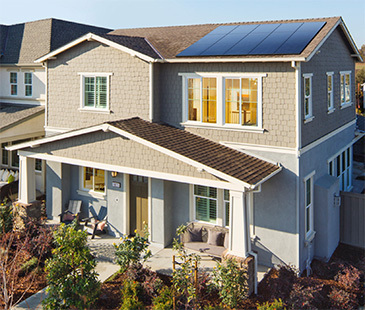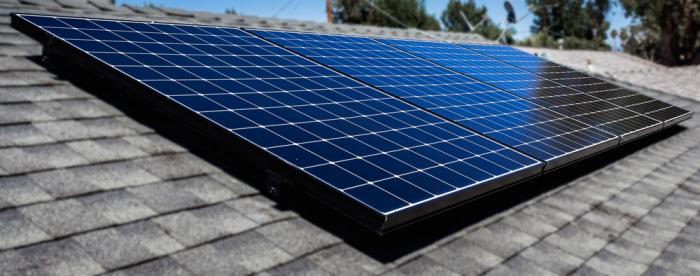
Editor’s Note: In 2020, SunPower announced the completion of the strategic spin-off of its manufacturing division into a separate business named Maxeon Solar Technologies, Ltd. As a result, SunPower has expanded its offerings to drive future growth. The SunPower Equinox® system now offers multiple panel options, including front- and back-contact panels, all of which are responsibly and rigorously quality tested to provide the best energy solution for your home.
From making an environmentally-friendly vinyl record to recording in an eco-friendly music studio, artists like David Small of Piuma are rising up to help the music industry adopt more sustainable practices. A Q&A session with the singer/songwriter takes a closer look at how musicians can take steps to reduce their carbon footprint while creating art.
David received a SunPower rebate in exchange for his interview.
1. What prompted your passion for creating environmentally-friendly music?
I grew up in California going to beaches up and down the coast, backpacking in the Sierra Nevada and finding a love for nature. Then in college, I studied Gandhi; he was all about living with integrity, where your actions align with your ideals—and making change within your sphere of influence—however big or small.
I feel my purpose is to use music and art to help catalyze positive environmental and humanitarian changes. I’ve composed music for nonprofits, such as Surfrider, supporting campaigns to protect the last twenty miles of undeveloped SoCal coastline. But I wanted the actual creation process itself to also contribute to the environmental movement. For example, for each Piuma vinyl EP sold, approximately six tons or +13,000 metric pounds worth of carbon can be removed from the atmosphere over the lifetime of five trees being planted through The Arbor Day Foundation. That offsets over a year’s worth of the average household’s carbon output.
In that way, I feel I am living with integrity, where my ideals are aligned with my actions.
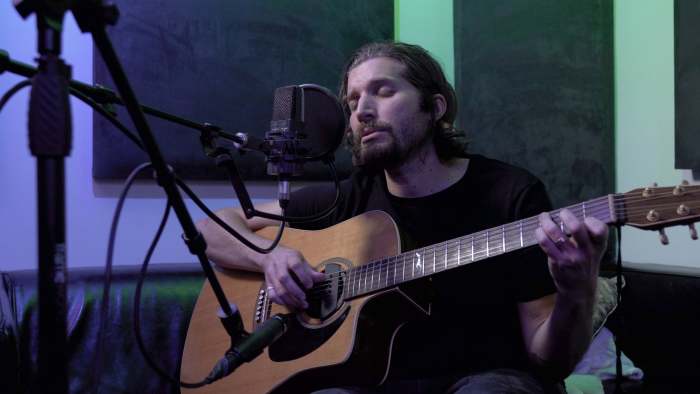
2. What does an eco-friendly studio look like?
An eco-friendly studio is constructed with recycled materials—wherever possible, such as an 80% recycled denim insulation and a floor underlayment made from 100% recycled tires. It is also energy efficient, with LED lights and removal of unnecessary outboard gear. And of course, it is powered by renewable energy like solar, where you are generating your own power from the sun or green energy programs through utility providers. Lastly, trees should be planted to offset lumber used during construction.
3. What factors did you consider when looking at solar solutions?
I looked at energy output, price, company reputation/community involvement, financing, warranty specs, and panel design. The unique technology used in SunPower’s Equinox® panels is really second to none. But the closer for me was that SunPower provides a 25-year warranty on the parts, power and labor. Too many people do not fully understand the benefits of buying solar, which is why I wrote the Powering Music with the Sun article—to help bring those to light—as well as explain why I went with SunPower.
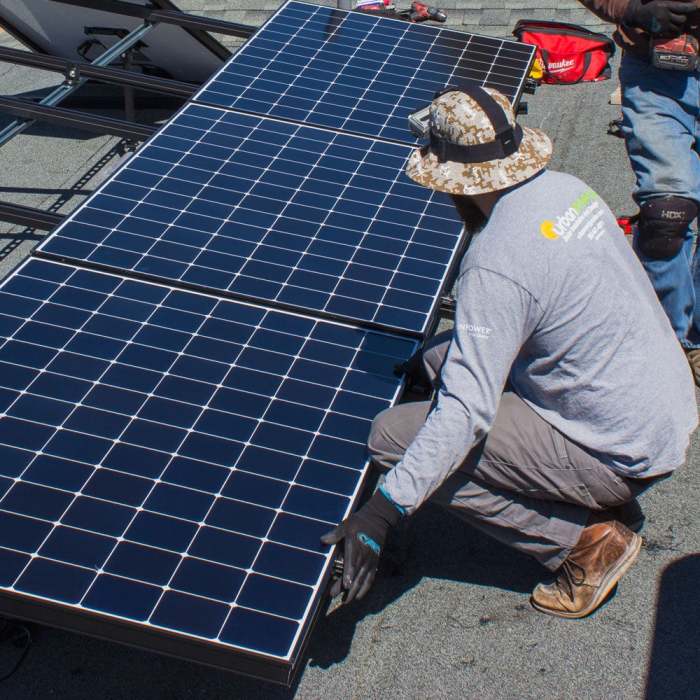
4. How much energy (on average) does your system produce? Does it meet all your energy needs?
Over the past year, the system produced 7,254 kWh of electricity, which is right on par with the amount the system was designed—to match our average annual usage. This way, we will not be producing a surplus of energy that would not be credited by the utility provider. We also upgraded the property with a cool roof, additional vents, and solar attic fans—to reduce A/C needs, which has helped with this especially hot summer, due of course to the climate crisis.
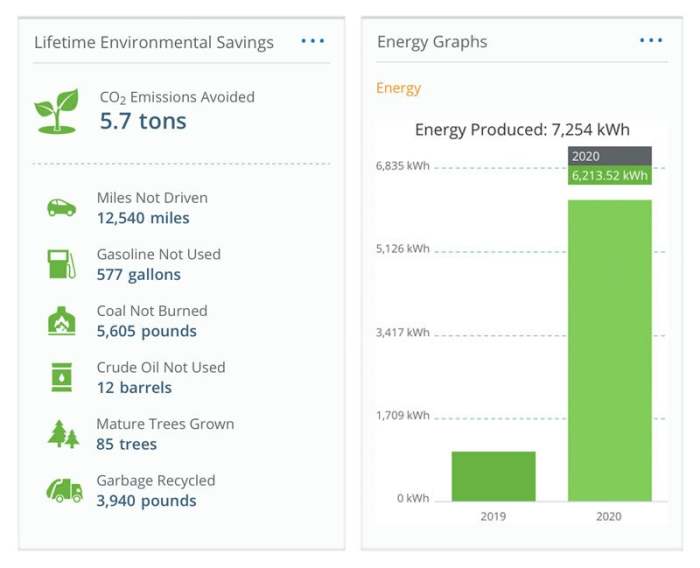
5. What kind of environmental savings did you realize in the first year you had your system up and running?
The monitoring app makes it very easy to see current and historical usage, showing not just the production, but also the environmental savings—based on specific periods. Over the past year we avoided 5.7 tons of CO2, which equates to 12,540 miles not driven, 577 gallons of gasoline not used, 5,605 pounds of coal not burned, or 85 mature trees grown.*Offset calculations based on the U.S. EPA Greenhouse Gas Equivalencies Calculator. These metrics, shown on the app, help conceptualize the environmental savings in a meaningful way—and it’s cool to show friends who ask if getting solar is worth it.
Luckily, I worked with an expert solar consultant from Urban Energy Solar, who showed me how to automatically have the program send him periodic reports—so that he can keep an eye on production. If it is not performing as intended, his team will take a look and make sure the system is working at peak performance.
6. What tips do you have for those who want to get a good deal on solar?
The best deal you can get with solar is to buy—not lease—and to buy fast. The federal tax credit went down from 30% to 26% in 2020 and is expected to drop again in 2021.*Tax credits subject to change. SunPower does not warrant, guarantee or otherwise advise its partners or customers about specific tax outcomes. Consult your tax advisor regarding the solar tax credit and how it applies to your specific circumstances. Please visit the dsireusa.org website for detailed solar policy information. Also, by buying instead of leasing—your property value may immediately increase by approximately 4%.
I also recommend that you work with an expert dealer—like a SunPower Master Dealer—who can provide a proposal so you can see what the finances and production will look like for your property—taking into consideration the roof structure, sun exposure, shading, local utility credit offerings, etc. I received quotes from multiple solar companies and they just wanted to lease a system to me regardless of these factors.
Lastly, I would encourage everyone to join The Sierra Club. One reason is that SunPower offers members a $1,000 rebate and also donates $1,000 to The Sierra Club. In my mind, that’s a win-win.
David will be performing live on the next music webcast of MusicPro Café at 8pm Eastern time, on Thursday, October 22nd.

